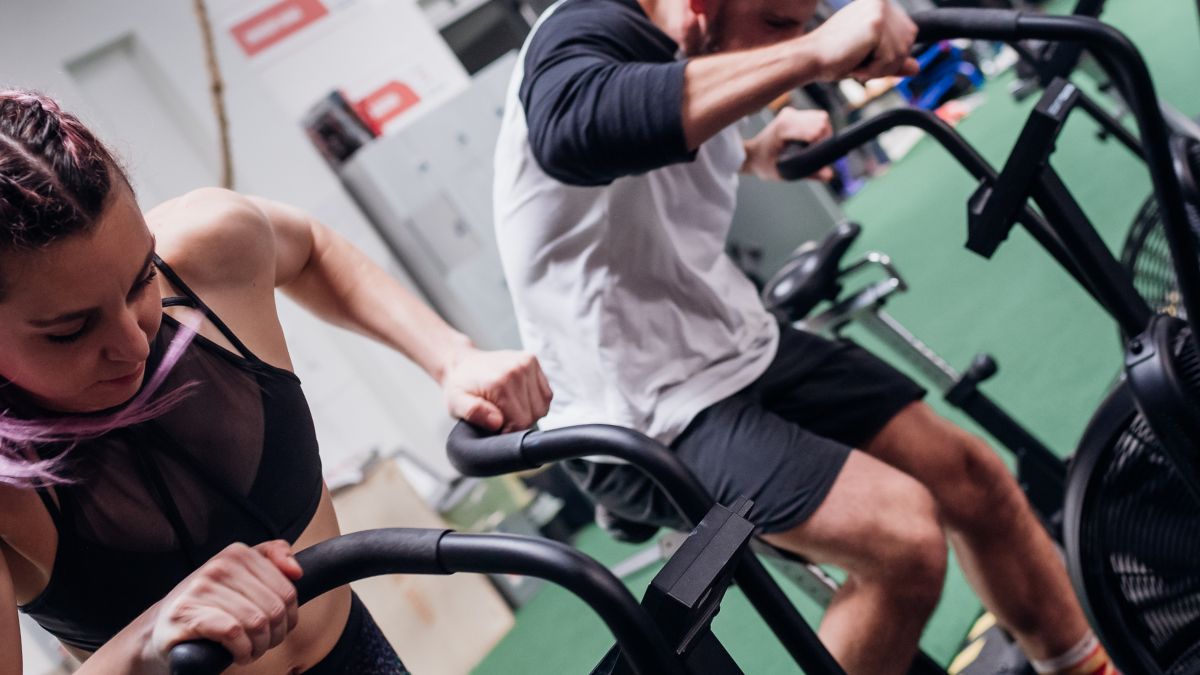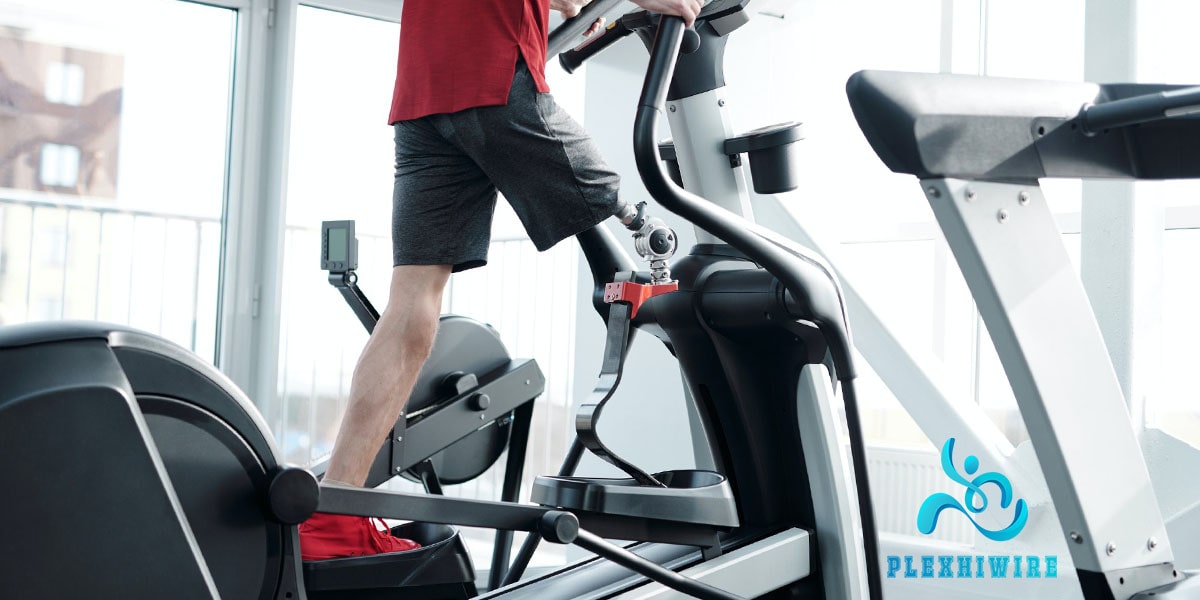What Muscles Do a Stationary Bike Work?
If you’re looking for an effective and convenient form of exercise, using a stationary bike may be the perfect option for you! This low-impact cardio and aerobic machine can help strengthen muscles in your legs, hips, and arms while also offering flexibility with speed levels. Not only is it a great way to get your heart rate up while burning calories quickly – but it can work for multiple muscle groups at once too! In the post “What muscles do a stationary bike work?” on this blog, we’ll explore the different muscles that are targeted when taking a spin on the stationary bike so you can make sure to benefit from your workouts as much as possible.
Many people turn to stationary bikes for a calorie-burning cardio workout that they can do in the comfort of their own homes. From toning your legs and glutes to working your core strengths, there are plenty of ways that the simple act of cycling on an exercise bike will help you reach all those fitness goals. So keep reading for more details about exactly what muscles are used when riding an exercise bike!
- What Muscles Do a Stationary Bike Work?
- What is a Stationary Bike?
- What Muscles Do a Stationary Bike Work?
- What are the Benefits of Using a Stationary Bike for Muscle Building and Fitness Goals?
- What are the Benefits of Using a Stationary Bike for Muscle Building and Fitness Goals?
- How Long Does It Take to Build Muscle While Cycling in Place?
- How to Form a Stationary Bike Workout Routine to Build Muscle
- How Often Should You Ride a Stationary Bike to Maximize Muscle Gains?
- What Muscles Should You Focus on While Riding a Stationary Bike to Get the Most Bang for Your Buck?
- Are Stationary Bikes More Effective at Strengthening Certain Muscles Than Others, and Why?
- Frequently Asked Questions
- Conclusion
What is a Stationary Bike?
A stationary bike, also known as an indoor bike or spin bike, is a type of exercise equipment that allows users to simulate outdoor cycling within the comfort of an indoor setting. Stationary bikes come in different forms, such as upright bikes, recumbent bikes, and indoor cycling bikes.
Upright bikes are designed to mimic a traditional outdoor bike, with the pedals directly underneath the rider’s body and the handlebars positioned higher up. Recumbent bikes, on the other hand, offer a more relaxed and comfortable workout experience, as the rider sits in a reclined position with the pedals positioned in front of them. Indoor cycling bikes, also called spin bikes, are specifically designed for high-intensity workouts and often come with additional features such as adjustable resistance and clip-in pedals.
These bikes come in various types such as upright, recumbent, spin or indoor cycling, and air bikes. Each has its own unique features and benefits. Upright bikes have a traditional bike design with a compact frame and high handlebars that simulate outdoor cycling. They offer a comfortable seat and an emphasis on cardio workouts. Recumbent bikes have a reclined seat with a comfortable backrest that provides a low-impact workout for people with back or joint problems. Spin bikes are known for their flywheels that simulate the momentum of outdoor cycling. They emphasize intense HIIT cardio and strength workouts. Air bikes, on the other hand, use a fan to generate resistance and are ideal for full-body workouts.
Stationary bikes offer various health benefits such as improving cardio fitness, burning calories, and strengthening lower body muscles such as hamstrings, quadriceps, and calves. They can also improve joint mobility and reduce joint pain. Many stationary bikes come with smart technology features such as heart rate monitors, built-in workout programs, and interactive video games that make indoor cycling fun and engaging.
In conclusion, stationary bikes are an excellent option for people looking to improve their fitness levels, lose weight, or train for outdoor cycling events. With a variety of types and models available, there is a stationary bike that can cater to everyone’s fitness goals and preferences.
What Muscles Do a Stationary Bike Work?
Stationary bikes are popular exercise equipment that effectively helps in building cardiovascular endurance and toning muscles. They are designed to simulate regular outdoor cycling and provide a low-impact exercise option to protect the joints. However, many people wonder which muscles are actually worked while pedaling on a stationary bike.
One of the primary muscle groups that are worked when cycling on a stationary bike is the lower body, including the quadriceps, hamstrings, and calves. When you push the pedals, your legs engage in a repetitive motion that results in the contracting and stretching of these muscles. The quadriceps, located on the front of your thighs, are responsible for extending your leg while the hamstrings, located on the back of your thighs, help in flexing the knees. Additionally, your calf muscles contract and relax to help lift up and press down the pedals.
Apart from the lower body, stationary bikes also engage the core muscles. Even though cycling is mainly known for working the legs, it requires a stable and strong core to maintain proper form and positioning on the bike. The core muscles include the abdominal muscles, lower back muscles, and hip muscles. These muscles work together to stabilize the pelvis and help maintain good posture while cycling.
A stationary bike workout also engages your glutes or the buttock muscles. These muscles also get activated when you pedal on the bike, lending support and power to your pedaling motion. Besides, you’re also working out your calves, or the lower leg muscles, as they contract to help you push the pedal downwards.
In addition to the above muscles, performing workouts on a stationary bike also helps in improving your cardiovascular health, respiratory endurance, core strength, and toning your abs. As you pedal, your heart rate increases, resulting in improved cardiovascular endurance. Moreover, it also encourages you to maintain proper posture, resulting in a stronger core and toning your abdominal muscles.
In conclusion, a stationary bike workout is an excellent exercise option for people looking for a low-impact and effective way to build strength, endurance and improve their overall fitness level. By engaging your quadriceps, hamstrings, glutes, calves, and core muscles, a regular stationary bike workout can help you achieve your fitness goals and enhance your well-being.
What are the Benefits of Using a Stationary Bike for Muscle Building and Fitness Goals?
When it comes to achieving muscle-building and fitness goals, incorporating a stationary bike into your workout routine can provide numerous benefits. Not only is it a low-impact exercise that is easy on your joints, but it can also be adjusted to suit your individual fitness level and goals.
One of the most significant benefits of using a stationary bike for muscle building is its ability to target multiple muscle groups simultaneously. Cycling helps to strengthen your quadriceps, hamstrings, glutes, and calves and also engages your core muscles for added stability. Additionally, as you build strength and endurance, you can increase the resistance on the bike to continuously challenge your muscles and avoid plateauing.
See more: Should I Turn a Bike Into a Stationary Bike?
In addition to building muscle, cycling can also improve your cardiovascular health. The repetitive pedaling motion increases your heart rate, helping to improve circulation and strengthen your heart. This can lead to a reduced risk of cardiovascular disease, stroke, and other chronic conditions.
Another benefit of using a stationary bike for fitness is its convenience and versatility. You can easily incorporate cycling into your daily routine, whether it’s at the gym or in the comfort of your own home. Additionally, you can adjust the resistance and intensity of the workout to suit your individual goals, whether it’s to build muscle, improve endurance, or burn fat.
Furthermore, cycling is an excellent way to burn calories and lose weight. Depending on your weight and intensity level, you can burn over 500 calories in just an hour of cycling. This makes it an effective way to achieve your weight loss goals while also building muscle and improving your overall fitness.
In conclusion, incorporating a stationary bike into your workout routine can provide numerous benefits for muscle-building and fitness goals. From targeting multiple muscle groups to improving cardiovascular health and convenience, it’s an effective and versatile exercise that can help you reach your goals in a safe and effective manner.
What are the Benefits of Using a Stationary Bike for Muscle Building and Fitness Goals?
Stationary bikes have been popular exercise machines for many decades, thanks to their numerous benefits. Among the benefits is the fact that stationary bikes can help individuals maximize muscle gain, especially when certain exercises are practiced. Typically, the muscles in one’s legs are the primary focus when using a stationary bike, although, depending on the exercise, one can work out different muscle groups around their body. Here are some special exercises that can be done on a stationary bike to maximize muscle gain.
Resistance Training
One of the simplest ways to build muscle on a stationary bike is by adding resistance. When resistance is added, the amount of force the body needs to exert in order to cycle increases. This, in turn, puts more stress on the muscles leading to increased muscle gain.
HIIT (High-Intensity Interval Training)
Another great way to build muscles on a stationary bike is by practicing HIIT. HIIT is an exercise routine that involves cycling through short bursts of high-intensity exercises that alternate with intervals of lower-intensity exercises. HIIT is particularly effective for muscle building when the high-intensity periods target specific muscle groups.
Standing Sprints
An essential exercise for building leg muscles is standing sprints. To execute this exercise, one goes into a standing position while cycling against resistance and cycles as fast as possible for a short period of time. When performed consistently, standing sprints can build muscle tone in the glutes, hamstrings, and quadriceps.
Seated Climbs
Seated climbs refer to the exercise of climbing hills while seated on a stationary bike. When done appropriately, this exercise can work out the glutes, quadriceps, hamstrings, and calves. To maximize muscle gain, individuals should ensure to add resistance while cycling and work out for more extended periods.
In conclusion, there are several exercises that can be done on a stationary bike to maximize muscle gain. Resistance training, HIIT, standing sprints, and seated climbs are ideal exercises that target different muscle groups around the body and build muscle tone effectively. When done consistently, these exercises can improve overall health while providing lasting muscle gain.
How Long Does It Take to Build Muscle While Cycling in Place?
Cycling in place, also known as indoor cycling, has become an increasingly popular exercise in recent years. This low-impact workout involves cycling on a stationary bike, mimicking the experience of cycling outdoors but from the comfort of your own home or gym. While it can provide a great cardiovascular workout, many people wonder how long it takes to build muscle while cycling in place.
Typically, it takes about 4-8 weeks of consistent cycling to see noticeable muscle growth. However, this can vary depending on how much resistance you’re using, how often and consistently you cycle, and your overall fitness level.
Firstly, it’s important to understand that building muscle through cycling in place is dependent on a variety of factors, including the intensity and duration of the workout, your body composition, and your diet. With consistent effort, it is possible to build muscle while cycling in place, but it may not be as effective as other forms of resistance training, such as weightlifting.
In terms of how long it takes to see results, it varies from person to person. Some people may notice an increase in muscle mass after just a few weeks of consistent indoor cycling, while others may take several months. It’s important to remember that muscle growth is a gradual process that requires patience and dedication.
To maximize muscle growth through cycling in place, it’s important to focus on progressive overload, which means gradually increasing the resistance or intensity of your workouts over time. This can be achieved by adjusting the resistance on the stationary bike, increasing the duration or frequency of your workouts, or incorporating other forms of resistance training into your fitness routine.
Additionally, it’s crucial to fuel your body with the right nutrients to support muscle growth. Consuming protein-rich foods, such as lean meats, beans, and nuts, can provide your muscles with the building blocks they need to grow and recover.
In summary, building muscle through cycling in place is possible, but it requires consistent effort, progressive overload, and a healthy diet. The timeline for seeing results varies from person to person, but with dedication and patience, you can achieve your fitness goals.
How to Form a Stationary Bike Workout Routine to Build Muscle
Stationary bikes are an excellent choice for cardiovascular exercise, but they can also be used for building muscle. Whether you are a seasoned athlete or just starting out, incorporating a stationary bike workout routine into your fitness regimen can help you achieve your desired muscle-building goals.
First, before you even start pedaling, you need to set your resistance level. This is what creates resistance against your muscles and helps to build strength. To build muscle, start with a resistance level that allows you to pedal comfortably for a few minutes, then gradually increase the resistance every few minutes until you are working at a challenging level.
Next, focus on the intensity of your workout. High-intensity interval training (HIIT) has been shown to be an effective way to build muscle and burn fat. Try alternating between periods of high intensity, where you pedal as fast as you can, with short rest periods in between. This will increase your heart rate, elevate your metabolism and build muscle more efficiently.
In addition to resistance and intensity, the duration of your workout is also important for muscle building. Aim for at least 30 minutes of cycling, with longer durations being more effective for muscle growth. Consider varying your routine to prevent plateauing and target all the muscles in your legs, thighs, glutes, and hamstrings.
It’s also important to remember to include rest days in your stationary bike workout routine. Workouts on the stationary bike should be done every other day or two day a week, depending on intensity. Muscles grow during rest, not during a workout session. Taking time to rest and recover is essential to avoid injury and create an optimum environment for muscle growth.
In conclusion, building muscle through a stationary bike workout routine is achievable with the right combination of resistance, intensity, duration, and rest days. By following these guidelines, you can transform your stationary bike into a powerful tool for building lean muscle mass and achieving your fitness goals.
How Often Should You Ride a Stationary Bike to Maximize Muscle Gains?
Riding a stationary bike is an excellent form of cardiovascular exercise that can also help you build muscle. The frequency at which you ride your stationary bike will determine the extent to which you can maximize your muscle gains.
The American College of Sports Medicine recommends that you engage in moderate-intensity aerobic exercise for at least 150 minutes per week. Splitting this time across several days can help you achieve maximum results while minimizing the risk of injury.
To maximize muscle gains, you should ride your stationary bike for at least 30 minutes each session. Aim to ride your stationary bike at least 3-4 times a week, focusing on alternating between high-intensity and moderate-intensity workouts.
View more: How to Measure Inseam for Bike Indoor
The intensity of your stationary bike workout will also play a crucial role in determining the extent of your muscle gains. To maximize muscle gains, aim to ride your stationary bike at a moderate to vigorous intensity level. This level of intensity can help you burn calories while also building leg muscles, including quadriceps, hamstrings, and glutes.
Moreover, resistance training, such as incorporating weightlifting exercises like squats or lunges, can work hand in hand with stationary bike workouts to promote muscle growth. You can plan to do resistance training, at least twice a week.
However, muscle-building is not an overnight process; it requires time, consistency, and dedication. A plateau can occur in muscle growth if the workouts produce no variation. So, to maximize your muscle gains on the stationary bike, you should increase resistance, alternate the speed, and re-evaluate the workout plan routinely.
In summary, to maximize muscle gains, you should ride your stationary bike at moderate to vigorous intensity for at least 30 minutes, 3-4 times a week, alternating between high and moderate-intensity workouts. Combining these workouts with resistance training can also help promote muscle growth. Consistency, variation, and dedication can ensure that you achieve your muscle gain goals.
What Muscles Should You Focus on While Riding a Stationary Bike to Get the Most Bang for Your Buck?
When riding a stationary bike, it’s important to focus on the muscles that will give you the most efficient workout. One of the main muscle groups that will be targeted during a stationary bike workout is your lower body. This includes your quadriceps, hamstrings, glutes, and calf muscles. These muscles are important because they work together to create a smooth and powerful pedal stroke.
Another muscle group that you should focus on while riding a stationary bike is your core muscles. Your abdominals, obliques, and lower back muscles work to stabilize your body as you pedal and maintain an upright position. Strengthening your core is not only important for improving your posture while cycling, but it can also help to prevent lower back pain.
In addition to your lower body and core muscles, your upper body muscles can also benefit from a stationary bike workout. Your biceps, triceps, and shoulders can benefit from the rhythmic movement of the handlebars. Engaging your upper body during a workout can also help to increase your heart rate and enhance your calorie burn.
It’s important to note that the muscles you focus on during a stationary bike workout will depend on your personal fitness goals. If you’re looking to increase your cardiovascular endurance, you may want to focus on increasing your pedaling speed and resistance. If you’re looking to increase your muscle strength, you may want to focus on increasing your resistance and intervals. Regardless of your fitness goals, incorporating a stationary bike into your exercise routine can provide a great low-impact workout for a variety of muscle groups.
Are Stationary Bikes More Effective at Strengthening Certain Muscles Than Others, and Why?
Stationary bikes have become increasingly popular in recent years as a low-impact and convenient form of cardio exercise. However, many wonder if these bikes are more effective at strengthening certain muscles over others. The primary muscles worked during this exercise include the quadriceps, hamstrings, glutes, and calves.
Through the repetitive pedaling motion, the quadriceps, located at the front of the thigh, are heavily engaged. This muscle group is responsible for extending the knee joint, which is the primary movement during pedaling. Moreover, the hamstrings, located at the back of the thigh, also play a significant role during biking. The hamstrings work in tandem with the quadriceps to drive the pedals forward through the “pulling” phase of the pedaling motion.
In addition to the thigh muscles, the glutes are also activated during biking. The gluteus maximus, the largest muscle in the buttocks, is utilized heavily during pedaling, but the gluteus medius and minimus are also utilized to a lesser extent. An individual who is regularly cycling may experience a significant increase in their glute strength, which can lead to greater power, stability, and improved posture.
Lastly, the calf muscles play a smaller but still essential role in the pedaling motion. The gastrocnemius and soleus, both located in the calf, are responsible for plantar flexion, which is the action of pointing the toes downwards. This movement is required to complete the pedaling motion effectively.
Overall, stationary bikes are an effective way to strengthen and tone the quadriceps, hamstrings, glutes, and calves. However, it is worth noting that while cycling primarily targets these muscles, it is always advised to incorporate a variety of exercises to work the entire body effectively.
Frequently Asked Questions
Does Stationary Bike Work Glutes?
Yes, stationary bikes can be a great way to work your glutes. Pedaling on a stationary bike engages the muscles in your buttocks, helping to strengthen and tone these muscles. If you want to increase the intensity of the workout for your glutes, try increasing the tension level on the bike or pedaling at faster speeds. You may also want to add in some intervals of higher-intensity exercise. For example, you can increase the tension level and then pedal fast for one minute followed by two minutes of light pedaling. This type of interval training can help to get your glutes burning as well as provide a great cardio workout. Additionally, you can add standing exercises on the bike where you stand up out of the saddle and push down on the pedals with your full body weight to target the muscles in your glutes even more. With a bit of creativity, stationary bikes are an effective way to work your glutes while burning calories and having fun!
Are 30 Minutes on a Stationary Bike Enough?
The answer to this question really depends on your individual fitness goals. For some people, 30 minutes of stationary biking may be enough for a good workout. However, if you are looking to get fitter and increase your overall health and endurance then it is recommended that you aim for longer periods of exercise. Depending on your current fitness level, intensity of the workout, and the type of bike used, 30 minutes may not give you adequate results. It is best to consult with a certified personal trainer or doctor before beginning any type of exercise program. They can help determine what amount and duration is best suited for your specific needs.
It is also important to remember that while exercising on a stationary bike can provide many health benefits, like improved cardiovascular health, proper nutrition, and hydration are also important for overall fitness. Eat a balanced diet that is low in processed foods and high in fruits, vegetables, and complex carbohydrates. Stay hydrated throughout your workout to ensure that you get the most out of it. Remember, only you know what is best for your body — listening to what it needs as well as consulting with professionals can help you determine the right amount of exercise for your individual goals.
Can You Get in Shape Just on a Stationary Bike?
Yes! Stationary bikes are an excellent way to get in shape and stay fit. They provide a great cardiovascular workout that increases heart rate, burns calories, and strengthens your muscles. Depending on the type of stationary bike you have, you can easily adjust the resistance to increase or decrease the intensity of your workout.
Stationary bikes give you the freedom to exercise whenever is convenient for you without having to leave home or deal with weather conditions outdoors. You can also use a stationary bike indoors; this allows you to keep up with your fitness routine even when it’s raining or cold outside.
To maximize the benefits of a stationary bike workout, incorporate other exercises into your routine such as planks, squats, pushups, and lunges. This will help to develop strength and endurance while improving your overall fitness level.
Conclusion
Overall, riding a stationary bike is a great way to strengthen and tone your muscles without having to go outdoors. It works almost all major muscle groups like the quadriceps, hamstrings, glutes, calves, and even your core muscles. If you want to increase the intensity of your workout you can add resistance or speed up your pedaling. Regardless, stationary bike workouts are an excellent option as the exercises can be tailored to fit any fitness level. With the variety of options available for cycling indoors these days, it’s much easier to design effective routines and stay in shape even when the weather doesn’t permit going outside. Not only that but choosing to workout inside also distractions. Plus it helps save time so you don’t have to drive places!
So why not give it a try? Before you know it you’ll be pedaling with ease and adding strength training into your daily routine. Don’t forget that stationary biking can also offer plenty of cardiovascular opportunities as well as provide an excellent sweat-inducing experience. Make sure to consult with your doctor before starting on any fitness plan, because taking steps now towards better health may have real impacts down the line.
Hope the article “What muscles do a stationary bike work?” This will help you in some way and don’t forget to share it with your friends.








